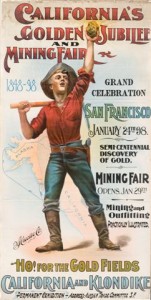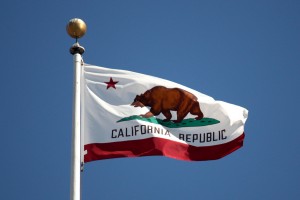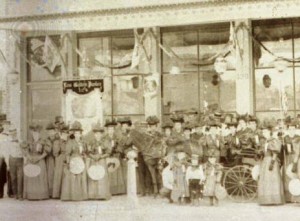Earliest flags to wave on film
The recent Academy Awards focused everyone’s attention on the movies. With the Oscars having been handed out, cast your mind backwards well more than a century to answer a question, “What was the first film to show a flag?”

For the answer, go to the website of the Library of Congress (www.loc.gov) and do some searching. A likely nominee is a film shot on Jan. 24, 1898, in San Francisco. The occasion was the opening of the Golden Jubilee, marking 50 years since the discovery of gold in California. Frederick Blechnynden was the man behind the camera, and the movie was copyrighted by Thomas Edison, one of the fathers of cinema.
A San Diego newspaper noted that, during the jubilee, “San Francisco appeared to be afloat with flags and bunting….Across all streets…are stretched at frequent intervals rows of many-colored flags. There are…waving stars and stripes, California bears on white [back]ground and the flags of all nations displayed from every store and commercial building.”

The bear on white, of course, was the California state flag.

Two segments of the Edison movie highlight not only flags, but also two groups not often seen in early motion pictures: women and minorities. One segment, titled “Native Daughters” and lasting only 30 seconds shows mounted women carrying a flag.
The Native Daughters of the Golden West were members of an organization formed in 1886 for women born in the Golden State. It is still in existence. The club’s “founding principles,” according to its official history, include “Devotion to the Flag of our Country.”
Also taking part in the jubilee were Chinese and Japanese residents, and the former contingent appears in another part of the Edison film, titled “Parade of Chinese.”
The Library of Congress describes the film as showing “a procession of the resident Chinese of San Francisco, carrying banners, flags, etc. They are followed by an immense float drawn by four white horses. In the background is seen a beautiful arch, while across the street are hung numerous flags, which wave in the wind.”

The newspaper in Fresno credited the Chinese with “a striking float, attended by gorgeously attired men on foot…and a band which rendered oriental music with ear-piercing effect.”
Later, the Grand Instrumental Concert to honor the occasion opened with – what else? – “The Star-Spangled Banner.”
